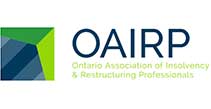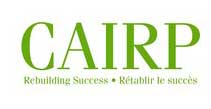Unsecured debt refers to financial obligations that are not backed by any tangible assets
Understanding Unsecured Debt
Unsecured debt refers to financial obligations that are not backed by any tangible assets. This means that there is no collateral that can be seized in case the borrower defaults on their payments.
Examples of could include credit card debt, personal loans, and medical bills.
Types of Unsecured Debt
The most common forms of unsecured debt is credit card debt. When an individual uses a credit card to make a purchase, they are borrowing money from the credit card company.
The borrower is then responsible for repaying the borrowed amount along with any interest and fees. Credit card debt is considered unsecured as the credit card company does not have any assets that they can take if the borrower is unable to repay the debt.
Another common form of unsecured debt in Canada is personal loans. Personal loans are often used for expenses such as home renovations, education, or debt consolidation. These loans are unsecured as the lender does not have any assets that they can seize in case the borrower defaults on their payments.
Additionally, unsecured liabilities can also include medical bills, utility bills, and other types of consumer debt.
These types of debts are considered unsecured as there is no collateral attached to them.
Pros and Cons
Unsecured debt can be beneficial in certain situations.
For example, if an individual needs to make a large purchase but lacks the funds, using a credit card or taking out a personal loan can be a good option.
It allows them to make the purchase and spread the cost over time. However, any debt can also be detrimental if not managed properly.
It can easily spiral out of control and become overwhelming, leading to financial stress and difficulties.
Managing Debt
Managing unsecured debt can be challenging, but it is not impossible.
Here are some strategies that can help:
- Create a budget and stick to it:
- A budget can help individuals understand their spending patterns and ensure that they are living within their means.
- Pay more than the minimum:
- Minimum payments are designed to keep borrowers in debt for as long as possible.
- Paying more than the minimum can reduce the overall interest paid and help individuals become debt-free faster.
- Prioritize high-interest debt:
- Credit card debt typically has a higher interest rate than other forms of debt.
- Prioritizing high-interest debt can help individuals save money in the long run.
- Consider debt consolidation:
- If an individual has multiple forms of unsecured debt, consolidating them into one loan can make it easier to manage, and
- may result in a lower interest rate.
- Seek professional help:
- Where financial liabilities become overwhelming, seeking the help of YanchDey and our insolvency trustees.
Unsecured debt is a common form of debt in Canada, and it is important for individuals to understand what it is and how it works.
While debt can be beneficial in certain situations, it can also be detrimental if not managed properly.
By creating a budget, paying more than the minimum, prioritizing high-interest debt, consolidating debt, and seeking professional help, individuals can effectively manage their finances to avoid falling into a debt trap.
Remember, it’s better to address debt issues by giving us a call before they become too big to handle.




Comments are closed.